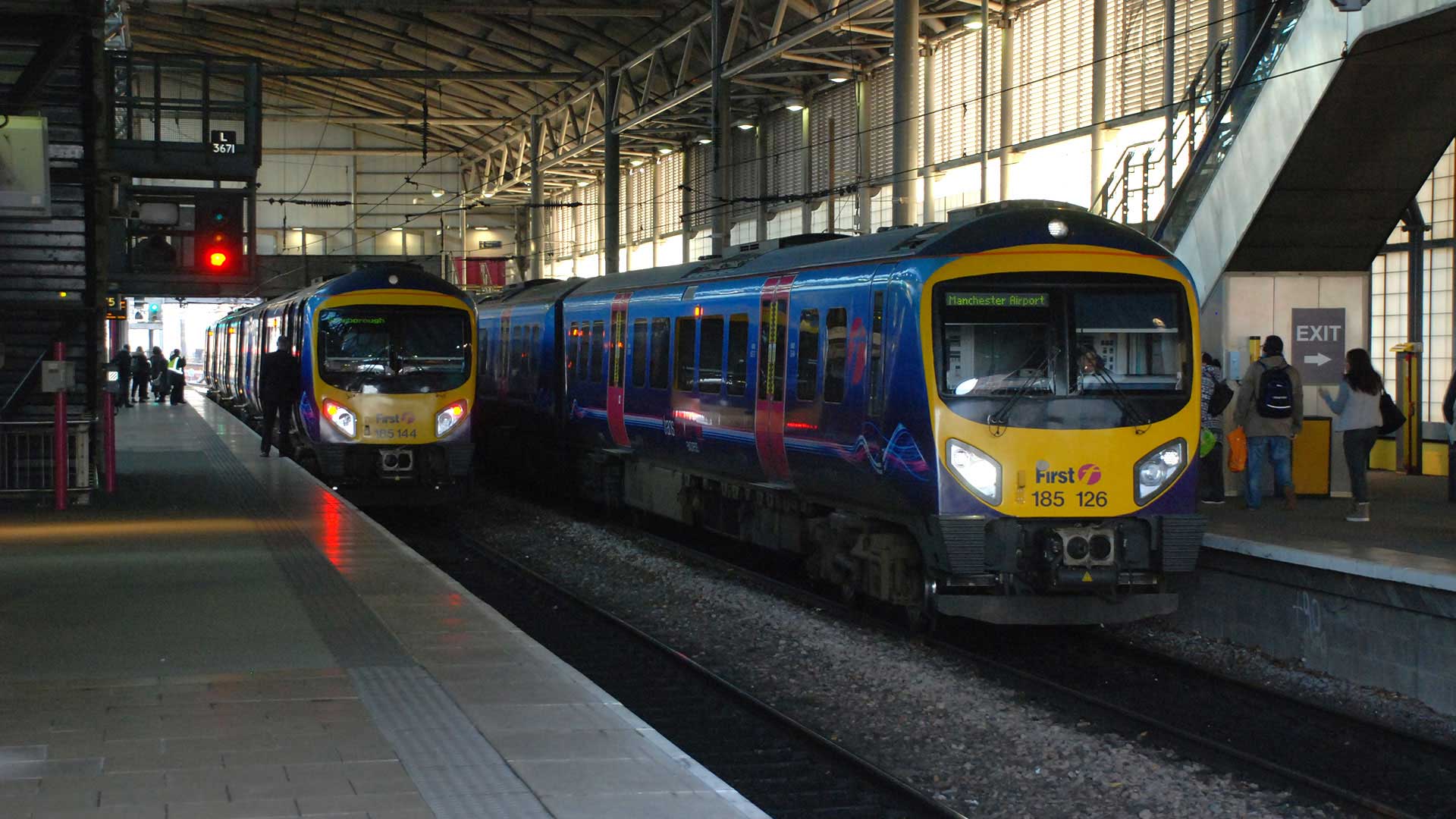In recent years we have seen such a huge variety of new door methods and despatch methods used. We have the traditional Guard Open Guard Close and then the Driver Open Guard Close and the Ten Bell methods too. But then you have all these new methods like what GA on their 720/745/755 and MR on their 777 and SE on their 395 and SWR on their 701 use. And now another method on the TFW 398/756 too. Then you have some trains like SN on their 377/387 with their OBS who are not safety critical or guaranteed but are booked to be on every train. So we have seen such a huge variety of methods recently compared to say fifteen or twenty years ago.
Currently we have at least eleven different methods of operation as detailed below:
My question is if there is a best method? I am curious as to what others think is the most suitable method to use?
The traditional method of Guard Open Guard Close is arguably the safest. As this means the Guard their local door first and steps out to check before opening other doors. So this means the risk of doors being opened off platform if the Driver stops at the wrong position is very little. On trains where the Driver opens the doors there is a much greater risk especially at TOCs where train length varies a lot.
The method used on GA where there is a guaranteed safety critical Guard who has no involvement in doors does have the benefit of giving the Guard more time to check and sell tickets on busy trains. As this means that the Guard does not have to get back to the doors at each stop so can spend far more time on tickets. But of course this only works if the Guard actually bothers. As we have seen on Southern with their OBS many never bother to check tickets.
So this is not really a question of DOO vs non DOO but more a question of what method of operation should be used on trains with staff onboard. I would be interested in hearing others thoughts.
Also could we eventually move to standard system of operation on all trains? With so many different trains and different TOCs using different methods is it likely that the railway will move to one common system in the future especially once the older trains are gone and if the network is nationalised?
Currently we have at least eleven different methods of operation as detailed below:
----
• Method A - Guard Open Guard Close
This is where the guard has full control of opening and closing the doors. The guard opens their local door and steps out to check the train is fully platformed then releases the other doors. Then when the train is ready to depart the guard closes all doors except theirs and then closes their local door. The guard then gives two on the bell which the driver repeats and the train departs.
Used On:
CH MK3
CS MK5
EMR 158 170 222 360
GWR 150 158 MK3
IL 484
LNER MK4
LNWR 150 350 730
NO 150 155 156 158 170 195 319 323 331 333 769
SN 171
SR 153 156 158 170 MK3
SWR 158 159 442 444 450 455 456 458 707
TFW 150 153 158 170 175 197 230 231 769 MK4
TPE 185
XC 170
WMR 170 172 196 323 350 730
----
• Method B - Driver Open Guard Close
This is where the Driver releases the doors. Then when the train is ready to depart the guard closes all doors except theirs and then closes their local door. The guard then gives two on the bell which the driver repeats and the train departs.
Used On:
AWC 390
ES 373 374
GC 180
GWR 165 166 387 800 802
HT 802
LNER 800 801
NIR 3000 4000
SE 375 465 466 (outside London Metro area)
SE 377 (saloon only) (outside London Metro area)
SN 377 (saloon only) (Clapham to Watford and Redhill to Tonbridge)
SR 380 385
TPE 397 802 MK5A
----
• Method C - Ten Bell Despatch
This is where the driver releases the doors. Then when the train is ready to depart the guard gives 1-2 which the driver repeats. The driver then preses the door close button. Once all the other doors are closed the guard closes his local door. The guard then gives two on the bell which the driver repeats and the train departs.
Used On:
AWC 221
CH 165 168 172 (North of Banbury)
GC 221
IR DD
NIR DD
SE 377 (cab only) (outside London Metro area)
SN 377 (cab only) (Clapham to Watford and Redhill to Tonbridge)
XC 220 221
----
• Method D - Six Bell Despatch
The driver releases the doors. Then when the train is ready to depart the guard gives 1-2 which the driver repeats. The driver the presses the door close button and closes all of the doors including the guards local door. The driver checks the cameras and the train then departs.
Used On:
TFW 398 756
----
• Method E - Key Fob Despatch
The driver releases the doors. Then when the train is ready to depart the guard touches a key fob on the reader by the door which notifies the driver that the train can depart. The driver the presses the door close button and closes all of the doors including the guards local door. The driver checks the cameras and the train then departs.
Used On:
MR 777
----
Method F - Flag Despatch
The passengers open or close doors (on slam door trains) or the driver opens and closes doors (on power door trains) but despatch is done by showing a flag to the driver. When the train is ready to depart the guard displays a flag (which the driver sees by leaning out of the cab) to let the driver know that they can depart.
Used On:
GWR MK3 (Night Riviera only)
IR 22000 29000 (Enterprise only)
----
• Method G - Driver Door Operation With Guaranteed Guard And A Degraded Despatch Option
The driver opens and closes the doors and despatches themselves with the guard having no involvement in door operation or despatch. However there is still a guaranteed safety critical guard onboard all trains. There is also an degraded despatch option for the guard to operate the doors and despatch should the cameras be broken.
Used On:
GA 720 (on Manningtree to Harwich and Colchester to Walton and Colchester to Clacton only)
GA 745 (Ipswich to Norwich)
GA 755 (all services North of Cambridge and North of Ipswich and the Harwich and Sudbury branches)
SWR 701
----
• Method H - Driver Door Operation With Guaranteed Guard But No Degraded Despatch Option
The driver opens and closes the doors and despatches themselves with the guard having no involvement in door operation or despatch. However there is still a guaranteed safety critical guard onboard all trains. But there is no option for degraded despatch so the guard can not operate doors or despatch if the cameras are broken.
Used On:
SE 395
----
• Method I - DOO With A Diagrammed But Not Guaranteed Safety Critical Second Person
The driver opens and closes the doors and despatches themselves. However there is a safety critical Guard who is diagrammed to be onboard all trains. There is also an degraded despatch option for the guard to operate the doors and despatch should the cameras be broken. However the Guard is not guaranteed so the train can run without them if necessary.
Used On:
GA 720 (Wickford to Southminster only)
GA 745 (London to Ipswich only)
GA 755 (London to Ipswich and Stansted to Cambridge only)
SE 375 377 465 466 (on Mainline services within the London Metro area)
----
• Method J - DOO With A Diagrammed But Not Guaranteed And Not Safety Critical Second Person
The driver opens and closes the doors and despatches themselves. However there is a second person who is diagrammed to be onboard all trains. This person is not safety critical and is not guaranteed so the train can run without them if necessary.
Used On:
GX 387
HX 387
LM 803
SN 377 387 (Coastway and Mainline services)
SR 318 320 334
SR 380 385 (Glasgow suburban and Ayrshire services)
----
• Method K - Full DOO Operation
The driver opens and closes the doors and despatches themselves and is the sole member of staff onboard.
Used On:
C2C 357 387 720
CH 165 168 172 (South of Banbury)
EL 345
GA 720 (except for Manningtree to Harwich and Colchester to Walton and Colchester to Clacton and Wickford to Southminster services)
GA 745 (only Stansted Express services)
GN 387 717
GWR 165 166 (the Thames Valley area except on the RDG to BSK/GTW/RDH services)
GWR 387 (except Didcot to Cardiff services)
LO 378 710
LU All Stock (all tube services)
SE 376 707
SE 465 466 (Metro services)
SN 377 387 (Metro services)
TL 700
----
My question is if there is a best method? I am curious as to what others think is the most suitable method to use?
The traditional method of Guard Open Guard Close is arguably the safest. As this means the Guard their local door first and steps out to check before opening other doors. So this means the risk of doors being opened off platform if the Driver stops at the wrong position is very little. On trains where the Driver opens the doors there is a much greater risk especially at TOCs where train length varies a lot.
The method used on GA where there is a guaranteed safety critical Guard who has no involvement in doors does have the benefit of giving the Guard more time to check and sell tickets on busy trains. As this means that the Guard does not have to get back to the doors at each stop so can spend far more time on tickets. But of course this only works if the Guard actually bothers. As we have seen on Southern with their OBS many never bother to check tickets.
So this is not really a question of DOO vs non DOO but more a question of what method of operation should be used on trains with staff onboard. I would be interested in hearing others thoughts.
Also could we eventually move to standard system of operation on all trains? With so many different trains and different TOCs using different methods is it likely that the railway will move to one common system in the future especially once the older trains are gone and if the network is nationalised?
Last edited:


